|
4/24/2024 0 Comments Finding the Way to RestThe life-changing power of yoga nidraBy Emma Rose
Desperate 3 a.m. decisions rarely change lives for the better. Kathryn Mikkelsen’s first experience with yoga nidra is an exception. In many respects, her story is a familiar one. A teacher for grades 7 through 12, Kate was deep into burnout and had been running on empty for weeks. She was and is the kind of person who gave of herself, but she felt like she had very little left. Add to that the trauma of living in Japan during the 2011 earthquake and subsequent evacuation, and Kate’s nervous system seemed permanently stuck in overdrive. So at 3 a.m. after a marathon of insomnia and fitful sleep, Kate surfed the internet looking for something, anything that would help her relax and finally turn off her brain. What she found was yoga nidra — a style of guided meditation that brings practitioners to a deep state of rest. “It was like a Hail Mary attempt. I just picked a thumbnail that looked pretty. The guide had a lot of followers, and I was like, that seems legit, let's give it a try. And it turned out to be the best thing I've ever done in my life.” That first yoga nidra meditation didn’t just help Kate finally fall asleep. Over weeks and months she used the guidance to regulate her nervous system and learn how to really and truly rest. Today she’s a yoga instructor at the Spiral Goddess Collective in Bangor, Maine and on the Insight Timer Meditation App. The Transformation Begins The transformation from stressed-out school teacher to centered meditation and wellness coach took years, but it all started with that first YouTube video from a guide and teacher named Ally Boothroyd. “I completely fell in love with her voice and the experience. I practiced every day and I fell asleep every day. It took me about four months before I could stay awake until the end of a meditation. And then I realized, oh, there’s a lot more going on here than just helping me sleep.” She started to notice shifts in her thinking and overall mental state. Her mind and body seemed more connected. She was less reactive and, best of all, she was sleeping through the night. “I got very curious, because I like to try new things. I thought: this is so great. How come I've never heard of it?” So she joined the teacher training to learn more. Yoga Nidra teacher training, at least the kind Kate pursued, tends to be an immersive experience. You’re encouraged to go at your own pace and really deepen your practice along the way. “When I started the teacher training, I thought I had a pretty good handle on what yoga nidra was. About two months into the training, I realized I was like a snowflake on that iceberg. It goes so deep and there's so much potential in this practice.” She’s been exploring that potential through her personal practice and guided offerings ever since. Yoga Nidra--A Unique State of Consciousness Along the way, Kate has adjusted her definition of what Yoga Nidra is. “I thought it was a type of guided meditation where somebody makes a script and reads it and another person listens and has a beautiful experience. But what I learned is that yoga nidra is actually a state of consciousness that is a combination of your body being deeply relaxed, similar to sleep, while you are still fully aware and alert. So it's a unique state of consciousness in between sleep and waking.” It’s a state that many people in the modern world never quite access. With smart phones, 24-hour news cycles, and the demand to be always on keep nervous systems on high alert, the connection between mind and body frays and often it takes a medical emergency to make someone slow down. In a world that desperately needs yoga nidra, it seems that few have ever even heard of it. Fortunately, scientists and researchers are starting to pay attention. Neuroscientist Dr. Andrew Huberman has incorporated some of the wisdom of yoga nidra into his non-sleep, deep rest (NSDR) protocol. One of the biggest advantages of yoga nidra is that it’s a completely drug-free intervention. The practice doesn’t require special tools or skills. As Kate says, “If you've ever fallen asleep, you can do yoga nidra.” Of course, the same cautions apply as with any meditation practice. Meditation can sometimes bring up difficult feelings, especially for people who have experienced trauma. If you’re actively in distress, other strategies might need to come first. You also need a quiet, undisturbed place to practice, which is why in-person classes like those offered at The Spiral Goddess Collective are especially valuable. The studio is a serene, welcoming space to practice away from the tasks and demands of home. As a bonus, practice happens among other people who are also seeking rest and peace in their lives. Yoga Nidra at The Spiral Goddess Collective The Spiral Goddess also hosts weekly classes in seated meditation, JourneyDance—a transformative movement practice, cardio dance, Kukuwa dance, and yoga. Special sessions include networking groups for radical careworkers, intentional tea service, and sonic yoga nidra, which combines yoga nidra with a sound bath played on crystal singing bowls. For upcoming yoga nidra meditation sessions visit The Spiral Goddess Collective’s Class Schedule or Kate’s website.
0 Comments
Part of the reason I opened this space was to offer something to our community that is rarely found in other places and spaces dedicated to fitness, wellness, dance, or yoga—a space that is inclusive of all bodies and identities not just in word, but in practice. I wanted to bring my particular approach to yoga and movement, which is queer—unconventional, radical, inclusive, trauma-informed, creative, and “deeply rooted in truth, love, and justice,” as Jacoby Ballard describes (and as I quote in part 1 of this blog). There are many ways to be queer, and one way is to challenge gender binaries and social and cultural norms of all kinds.
Many gyms draw strict gender lines with offerings for men and women, reinforcing stereotypes that weight rooms are for men and group fitness classes are for women. Locker rooms where you have to choose to identify as “man” or “woman” will likely feel unsafe if your appearance is gender non-conforming. Some yoga classes offer a certain pose variation “for men” or “for women” and reinforce binaries of gender. The music used in a lot of classes reinforces heterosexual narratives about love and romance and stereotypes about men and women (and boys and girls). Further, many group fitness classes are populated by people who are thin and already “fit” and fat bodies are conditionally welcomed into that space if they want to lose weight, as if this is the only goal of moving one’s body. The messaging in and around group fitness is largely about losing weight—about changing your body to be more “fit” or “healthy,” which ultimately means more socially acceptable. But “fat” is not just a physical weight we carry; it is often related to trauma—the psychological weight we carry. And narrow cultural norms reinforce the psychological weight that queer people, and all socially unacceptable people, carry. Before opening The SGC, I taught fitness classes for over a decade at a community non-profit where I did not feel comfortable being out (and I taught fitness classes elsewhere for many years before I was brave enough to consider myself queer). I was discouraged from including “political” messages in my classes and promotions for classes. I taught a program where I was required to use music that often had lyrics that I found to be offensive to women and to reinforce stereotypes related to race and sexuality. But it was deemed “clean,” and context was ignored. Still, being in my fat body, leading a class, was the least I could do to push back again one of the norms of fitness spaces. More than once a new participant walked right past me to talk to the thin woman they thought must be the instructor. Too often, we are unaware of the limited scripts we participate in on a daily basis and most gyms and fitness centers prefer not to have these societal corsets pointed out. One of the worst examples from this past teaching gig is something that happens all the time in mainstream/corporate America. One day I walked in to the facility to witness a large, masculine person teetering around in high heels and “acting” like the female CEO because he had won the honor of “CEO for the day.” The staff filled the lobby as everyone laughed and cheered for this offensive display, which was probably considered to be a light, fun team-building activity. I felt extremely uncomfortable as I passed through to teach my class and imagined what it would be like to be trans and witness that display. I debated for weeks about whether I should say something to my supervisor or just let it go. I still regret that I let it go. So, opening The Spiral Goddess Collective is also an opportunity for me to be more brave, more open, and more in line with my values. This is part of “the potential for queer identity,” what Mattilda Bernstein Sycamore describes as “the radical potential to choose one’s gender and one’s sexual and social identities, to embrace a radical outsider’s perspective, to create a culture on our terms, and to challenge everything that’s sickening about the dominant culture around us.” The Spiral Goddess Collective embraces a radical outsider’s perspective. Despite a name that is feminine, and perhaps makes people wonder if men are allowed to attend classes and events at The SGC (the answer: of course they are and they do!), our space is pushing up against the boundaries of the norms of fitness spaces as well as the norms of social justice movements. The Spiral Goddess is not just a symbol for women—it is an archetype that informs what we birth into the world, how we use our energy, how we treat ourselves and each other, and how we connect our inner and outer worlds. Feminine qualities and values like collaboration, compassion, empathy, nurturing, and flowing are seen as weaknesses. Women are expected to work out to get hard, but not too hard. To be thin, but still curvy. We compete against ourselves as much as the other women in the room. And, women and femme people of all genders, have been excluded, abused, and threatened in fitness spaces (and the larger culture), to say the least. Men are made to feel like they have to be stereotypically masculine (competitive, linear, logical, assertive, independent, controlling), which just adds to the problems of our patriarchal world and the mental health problems of men, women, and children and everyone outside of these gendered categories. Individuals are forced to choose one side of the gender binary or to push back as non-binary, both of which can lead to violence against ourselves and others. At The SGC we embrace the radical, political meaning of queer and practice radical acceptance—we invite you to come as you are and to discover that you are so much more than you’ve been allowed to be. We invite you to start healing your wounds so that we might also heal the systems and structures that cause these wounds. Transformative healing happens form the inside out and the outside in. When we move our minds/bodies together, we are stronger—we are a collective of power and potential! Queer is a reclaimed word. It is an umbrella term and denotes a spectrum of identities and sexualities that have been marginalized and demonized. I like this term because it is inclusive, political, and ambiguous; and the word also means unusual, not normal, odd, eccentric, and unconventional. To queer something, as Jacoby Ballard describes, is to “critique, challenge, and transform toward something more radical—that is deeply rooted in truth, love, and justice.” In this way, The Spiral Goddess Collective is a queer enterprise. And there are many ways to be queer.
Despite my professional life as a professor and fitness instructor—both things that appear to be the realms of the extrovert—I am a shy, introverted, home body who likes to spend time by myself—usually with a book and preferably with a cat or two or three. I’m not the type to yell from rooftops or wave a flag in a parade regardless of how passionate I am. When Hannah Gadbsy asks where the introverted queers are in her brilliant stand-up special, Nanette, I whisper “right here” and feel seen. When I filled out the forms to propose Bangor Pride Events—a Queer Yoga/Yoga Outside the Box event on June 17, First Friday Free Dance on June 2, and a table among the vendors at the Pride celebration on June 24, I was reminded about how much anxiety can come from inclusion and visibility. I’m sure I am not the only introvert who feels this anxiety when they are asked to expose semi-private parts of themselves toward a bigger cause. And yet, brave acts by marginalized people have created social change and continue to transform our world. I would like to be so brave, but my role is to support and facilitate. And I am far more comfortable behind the scenes. I have offered several events at Bangor Pride in the past through my role as a professor at UMA-Bangor. But now I offer these events through The Spiral Goddess Collective, a Center for Mind/Body Movement. Part of my desire to participate in Bangor Pride is to bring more visibility to the space and our offerings. We are a space where members of the LGBTQIA+ community can come for dance and yoga and healing modalities that are inclusive, trauma-informed, and social justice-oriented. And The SGC is a space where we want everyone to feel welcome. We are not simply a yoga studio; we are a center for mind/body movement. What we offer at SGC is not an ordinary approach to "fitness," dance, or yoga—it is something deeper and it is difficult to get people to come try something new, especially something that requires vulnerability and self-reflection. As Jacoby Ballard argues, queer and trans people don’t often have “the opportunity to be in their bodies as their whole selves” and a queer approach to yoga (and JourneyDance!) “creates expansion and spaciousness.” The Queer Yoga/Yoga Outside the Box event on June 17 is partially inspired by Jacoby Ballard’s book A Queer Dharma: Yoga and Meditations for Liberation. We all deserve to be in our bodies as our whole selves and this is one of the goals of SGC. Our work is inspired by a desire to make a difference in our community. We offer scholarships and encourage people to pay what they can. We offer a space where people can come together toward embodied wholeness—movement that isn’t about meeting the demands of dominant culture, but meeting ourselves where we are. The Salt Eaters, a 1980 novel by Toni Cade Bambara, opens with a healer, Minnie Ransom, saying to her patient, Velma Henry: “‘are you sure, sweetheart, that you want to be well?’” Velma, an activist, mother, and wife, has attempted suicide and she is having trouble holding onto herself, let alone the stool she is perched upon. Later, Minnie continues, “‘cause wholeness is no trifling matter. A lot of weight when you’re well.’” Staying well is a challenge even in the best of times and circumstance. Being well requires work, patience, self-compassion, and resources. The struggle is real. As Susan Raffo argues, “healing is dangerous work. Healing is about going into the struggle.”
The struggle to be well is neither a straight line nor a quick fix; in fact, as Leah Lakshmi Piepzna-Samarasinha, argues in her book, Care Work: Dreaming Disability Justice: “the idea that survivorhood is a thing to ‘fix’ or ‘cure,’ to get over, and that the cure is not only possible and easy but the only desirable option, is as common as breath.” We want to believe in cures because this is an idea that our culture feeds us, and our healthcare system supports the idea that a pill or a procedure can cure whatever ills us. In Who Is Wellness For? Fariha Roísín argues that “In the worlds of health and wellness, there’s an inconsistent belief that if you try hard enough at something, eventually you will see results.” Just lose a little bit of weight. Just eat organic whole foods. Just exercise three times a week. Just take this prescription. This isn’t bad advice, and wouldn’t it be nice if being well was just this easy? But what if, as Susan Raffo argues, being healed or cured is not what we should be seeking, but instead, what if “struggling better is the goal”? Many of us avoid struggle as often as we can. If we are struggling, our culture tells us, then there is something wrong with us. But the idea that we can avoid struggle, just like the idea that we can find a cure or heal completely from our trauma, is a myth. As Piepzna-Samarasinha reminds us, the idea that we can be fixed or cured is “a concept that has deep roots in ableist ideas that when there’s something wrong, there’s either cured or broken and nothing in between.” But there are a lot of spaces and possibilities between broken and healed—in these spaces there is room to move, to shift, to transform. As Roísín writes, “Healing is an everyday practice that requires personal resolve and diligence [and] relies on reworking, reweaving, and reimagining what it looks like to feel safe and at ease with oneself.” We have to think differently, but we can’t just think our way out of trauma. We have to engage our bodies as well as our minds. In fact, when we engage the body/mind, the results are far more powerful. We pursue all kinds of ways of finding ease, often deferring, deflecting, dismissing, detouring, avoiding, ignoring, replacing. Sometimes these coping strategies are just what we have to do to get through our day, our week, our life, and that’s okay. It is hard work to venture toward wellness and the path is circuitous and often hazardous. As Melissa Febos writes in her book, Girlhood, “It is slow, and there is no shortcut. . . It is sometimes painful and often tedious. . . . it requires consistent tending. We must choose it over and over.” And we cannot choose heling or wellness all alone: “A lasting, conscientious change in the self is similar to one in society.” We need to do the inner work and the outer connection. This is where JourneyDance comes in. In JourneyDance, we move our bodies in ways that help us heal emotional wounds. We loosen up trauma that has become wedded to our bones and tissues, embedded in our mind/body/spirit matrix. More than one participant has told me that JourneyDance has helped them make deeper and quicker progress toward healing than they were able to find in talk therapy and other attempts at healing that do not address the mind/body connection. This, too, is my experience with JourneyDance. We often say: “you have to feel it to heal it,” and the mind often wants to control the process and intellectualize it. But when we dance, we can’t help but feel what we feel and what we find sometimes surprises us. Melissa Febos writes a lot about the body and about her journey to overcome addiction and to work toward wholeness. She writes, “When I think about healing in the abstract, I imagine a closing-up, or a lifting-up. In my fantasies, healing comes like a plane to pull me out of the water. Real healing is the opposite of that. It is an opening, a dropping down into the lost parts of yourself to reclaim them.” We can’t rely on external factors to drag us out of our mire; in JourneyDance, we drop into the deepest parts of ourselves and claw our way back into the world to struggle another day. And another day. And another. And we become more powerful and more empowered. Before I found this healing modality, my introvert tendencies convinced me that I could work toward healing and wellness mostly by myself. Reaching out to other people was (and is) a huge part of my process, but reverting back into my shell often feels like the easy way out. JourneyDance provides a sacred space where we can be alone and together; we can work on our own stuff, but we can also hold the space for other people. I created The Spiral Goddess, a Center for Mind/Body Movement, to be more than just a space to do yoga and dance and move our bodies in the pursuit of health and wellness. It is a space for healing and processes that take a commitment to our own mind/body/spirit as well as to that of the collective. When we change ourselves, we change the world. This cannot be overstated. As Minnie reminds us in The Salt Eaters, “‘got to give it all up, the pain, the hurt, the anger and make room for lovely things to rush in and fill you full’” (16). There’s nothing wrong if we “‘want to stomp around a little more in the mud puddle . . . like a little kid . . .Nothing wrong with that’” (16). We’re all just stomping around in the mud, and there’s nothing wrong with that. But when we can harness our play toward healing, rather than toward distraction or avoidance, the possibilities abound. JourneyDance lets us play, experiment, explore, push and pull, open and close, mimic and create. Each time we return to this practice, we find new things about ourselves and new possibilities for our lives. We don’t have to ask, or be asked, if we want to be well because we are already moving toward—not a destination, but a weigh station—and our hearts, minds, bodies, and spirit are carving a journey where we can enjoy what we find along the way. 1/11/2023 0 Comments Feel It to Heal It“According to ancient Asian philosophy, life is not a straight line but a spiral. Every life lesson that has ever been presented to me (which means everything I have ever been through) will come back again, in some form, until I learn it. And the stakes each time will be higher. Whatever I’ve learned will bear greater fruit. Whatever I’ve failed to learn will bear harsher consequences.”
--Marianne Williamson "Are you sure, sweetheart, that you want to be well? . . . 'cause wholeness is no trifling matter. A lot of weight when you're well." --Toni Cade Bambara, The Salt Eaters Healing and transformation are closely related. We might argue that we cannot have one without the other. And we might argue that in order to transform our society and culture we first need to heal--our bodies, minds, and environment. In her book, Transforming Ethnic and Race-Based Traumatic Stress with Yoga: Rest, Reflect, Renew, Gail Parker describes the difference between healing and transformation in her note to the reader: "Healing is a term we use when we discuss illness or injury. Racial stress and trauma are emotional injuries that, left unhealed, become chronic and can lead to negative health outcomes. . . . Transformation, on the other hand, suggests change--in this case, positive change that leads to growth. To that end, transformation can be a change agent and can also be the result of healing. . . . What is true is that healing the wounds of racial distress along with individual personal and collective transformation are essential to a better quality of life for us all. Yoga is a science, a philosophy, a practice, and an art that can both effect healing and lead to positive transformation." While Parker focuses on racial stress and trauma, her words apply to all kinds of stress and trauma--individual and collective, complex and intergenerational. Further, In his groundbreaking book, My Grandmother's Hands: Racialized trauma and the Pathway to Mending Our Hearts and Bodies, Resmaa Menakem argues that we are all impacted by "white-body supremacy" which is "in the air we breathe, the water we drink, and the culture we share"; it is "an equivalent of a toxic chemical we ingest on a daily basis. Eventually, it changes our brains and the chemistry of our bodies." Those who practice and teach conscious dance, trauma-informed yoga, and embodied practices often say things like "the issues are in our tissues" and "we need to feel it to heal it." As Melissa Febos argues in her book, Body Work: The Radical Power of Personal Narrative, All forms of trauma--from intergenerational or historical traumas to those of illness, mental and physical abuse, and the many wrought by war—share the quality of disempowerment." In other words, we cannot begin to heal, let alone transform until we are willing to do the hard work of healing and until we recover some sense of agency. The work we do--the practices we do--at The Spiral Goddess Collective, a Center for Mind/Body Movement, aim to bring us back into our bodies, to help us become more empowered, to feel, and to heal and, ultimately, to transform ourselves, our community, and our world. 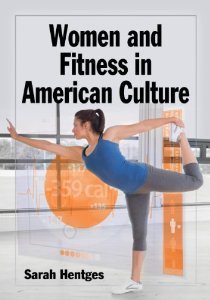 American fitness is one of my areas of specialization. I teach a class at the University of Maine at Augusta on the topic and I wrote a book about it, published almost a decade ago: Women and Fitness in American Culture. Not a lot of people have read my book, but not a lot of people want to read my book because it requires that we face the myths of American culture that promise that if we work hard enough then we can have whatever we want. The reality is that no matter how hard we work, there are some things that just won't be available to us because of biology, or social structures, or the limitations of time and space. The idealized, fetishized, whitewashed, airbrushed "perfect body" is one of those things. So, if the "perfect body" does not actually exist—or at least if we can agree that it is out of our reach—we might think: why bother? Why am I doing all of these squats, counting all of these calories, tracking my every step, denying myself sleep and quality time with my family, and more, only to keep reaching toward an impossible goal? But it is not so much the things that were are doing, as it is the way we are approaching the things that we are doing. For starters, the more we beat ourselves up—mentally and physically, metaphorically and realistically—the less likely it is that we are going to meet even the most modest of goals, The mindset we have when we approach physical activity shapes the results, or lack of results, that we get. The language we use to talk about fitness, health, and wellness is part of the problem. Here are some words and phrases that you will not hear at The Spiral Goddess Collective, a Center for Mind/Body Movement: shred, swole, grind, results, plateau, workout, goals, cheat day, gym, in shape/out of shape, burn it off, no pain no gain, high impact, routine, regimen, work off that ____ that you ate last night, go harder, move faster, calories in calories out. These words and phrases fit a philosophy that punishes the mind and body and sets a standard that is nearly impossible to achieve. We chase the dreams of perfection offered by products and services that will never be able to deliver what the glossy images and catchy names and taglines promise. At The SGC there is no scale to weigh yourself and the only mirror you will find is above the sink in the bathroom and it is surrounded by positive affirmations. When we "weigh" our fitness by different measurements, when we see ourselves without the negative self-image lurking in the background, we can start to transform ourselves and our lives. We change the way we show up for ourselves and the ways in which we carry ourselves. We change the way we relate to people and the ways in which we show up for the people we love. Every body is different and there are no simple answers, no simple solutions, no magic pills, no miracle workouts. American fitness is a sham and we have bought into it individually and collectively exactly because sometimes it works. But if you have been riding that roller coaster of weight loss and weight gain, if you have been stuck in that perpetual loop of not enough or too much, if you have tried all the diets and specialized equipment and you still aren't happy with what you look like—then something has to change. That something is not you—that something is the larger culture that shapes these trends, but changing the way you think about yourself and the way that you approach fitness is an important start. Here are some words and phrases that speak to our offerings at the SGC, a Center for Mind/Body Movement: mind/body and mind/body/spirit (those were obvious, weren't they?!), practice, authenticity, neuroplasticity, process, trauma-informed, balance, nervous system, functional movement, holistic, whole body, do what feels good, in the moment, listening to our bodies, health at every size, feminism, pleasure, joy, embodiment, rest, relaxation, mindfulness, contemplation, feel it to heal it, meditation, mental health, tap into your inner guide, feel, breathe, opening space in our minds and bodies. What happens when we change the language that we use to describe our fitness routines? When we don't think about moving our body as "working out"? What happens when we change the ways we approach moving our bodies? Now, I hate to make it more complicated, but that's what I do. Many of these words have also been morphed into the world of manufactured fitness and have been sold back to us as part and parcel of the world of American Fitness. (Stay tuned for my newest book, American Yoga Demystified!) Yoga is big business and as people start to realize and recognize the benefits found in mind/body approaches to health, wellness, and fitness, ancient practices (and modern innovations on these practices) are becoming even more commodified. The market is being saturated with inexpensive online yoga teacher training programs (especially since covid proved that we could do anything online if we wanted it badly enough), branded yoga approaches, stylish (and expensive) outfits, specialized gear, luxury spa vacations, and more "self-care" practices that bypass conversations about responsibility, integrity, and social (in)equality. In fact the good old "perfect body" myth has been rebranded as the "yoga body," and sometimes more specifically, the "yoga booty." This is the new whitewashed, fetishized, airbrushed ideal and it is just as toxic as the old one. So, now that we're feeling pretty discouraged, let me share some hope. We can—literally and figuratively—change our minds whenever we want to. And when we change our minds, we also change our bodies. And when we change our bodies and minds, we shift our relationship to ourselves. We learn to move authentically and to approach movement as practices rather than routines and regimens. We learn to love ourselves and to be compassionate to ourselves and this transforms the way we are in the world and the ways in which we interact with others and react to stressful situations. We learn to respond rather than react. We learn to let go of unrealistic expectations, to be in our bodies as they are, and to respect other people's bodies as they are. Maybe this all sounds too good to be true. How can changing the way we think about ourselves and the way we think about how we move our bodies transform us? The only answer is another question: how do we know if we don't even try? 8/20/2022 0 Comments For Indigenous People's Day . . . A Space with a View, A Center with a ViewpointLand acknowledgements have begun to be standard practice for many institutions and organizations, as well as for yoga teachers and studios. These statements aren't just an act of bending to the political climate--they are a recognition that the power-over practices of the past continue to reverberate into the present day, impacting the physical, mental, social, cultural, and economic wellness of individuals, communities, and our nation and keeping inequalities firmly in place.
Toward the larger goals of social justice, it is important to recognize that where we are and what we do does not exits in a vacuum. Both the land and the traditions of indigenous peoples influence and support the work we do at The Spiral Goddess Collective as well as the work that all of us who participate in conscious dance and yoga, specifically, and modern life, generally, participate in and benefit from. What does this mean? Part of our work is not just to acknowledge our debt to indigenous people's and traditions, but also to continue to educate ourselves, to honor these roots, and to participate in and support ongoing indigenous movements toward, individual, cultural, and collective healing and self-determination. This work is ongoing but it is only a beginning. Downtown Bangor and The Clark Building, and thus The Spiral Goddess Collective, a Center for Mind/Body Movement, exist on the unceded homelands of the sovereign people of the Wabanaki Confederacy: the Penobscot, Passamaquoddy, Maliseet, and Mi'kmaq people. The Kenduskeag Stream, a tributary or the Penobscot River, dominates the view from the windows at the front of the SGC center. The Penobscot River continues to be contested territory in the centuries-long struggle for stewardship toward ensuring a healthy ecosystem for all of Maine. Also framed from this view is the monument to Charles O. Howard, the victim of a hate crime in 1984. While walking down the street, Howard and his boyfriend were harassed for being gay and then Howard was assaulted and thrown over the bridge into the Kenduskeag Stream where he died by drowning. This, too, is a legacy for our land. On a wall near the Howard memorial is one of my favorite examples of street art and my favorite bird. It seems apt that some of the meanings and symbolism of the hummingbird include: "signals that challenging times are over and healing can begin. . . . an inspiring sign of hope and good luck. Hummingbirds also can have a spiritual significance and mean the spirit of a loved one is near." Bangor, and the State of Maine, are microcosms for the United States where movements for social justice have been ebbing and flowing since before the U.S. officially became a country. As a part of the legacies of racism, sexism, white supremacy, and imperialism we honor the land where we live, love, breathe, work, and find community. We acknowledge that here in the U.S. what we have was built on stolen land and by forced labor. We pay back this debt by keeping our eyes, ears, minds, and hearts open and settling for nothing less than justice, equity, peace, and love. Finally, yoga's roots are thousands of years old and are part of a larger set of traditions from indigenous practices from India, Africa, and other regions in the world--there is nothing new about embodied practices, but many have been lost, forgotten, or forced out of our cultural norms. The yoga practiced and taught at The SGC, a Center for Mind/Body Movement, draws on a variety of traditions, mixing styles and approaches that blend breathing, embodied movement, and meditation. Sarah writes more about these practices and approaches in her blog and in her forthcoming book, American Yoga Demystified: Creative/Critical Insights for a Complex World and an Evolving Mind and Body. On Indigenous People's Day, Monday, October 10th, 2022, we will not hold classes, and I hope we will hold the weight of indigenous peoples and practices, past, present, and future, in our hearts and minds. Here are a couple of resources if you want to learn more about The Wabanaki Confederacy: Four Directions and the Wabanaki Alliance. |
CategoriesAll Academia American Fitness Art Business Care Work Careworkers Creativity Cultural Politics Fitness Guest Blogs Language Meditation Mind/body Self Care Self-care Social Justice Space Transformation Trauma Women And Fitness Yoga Archives
June 2024
|
|
|
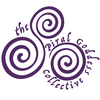
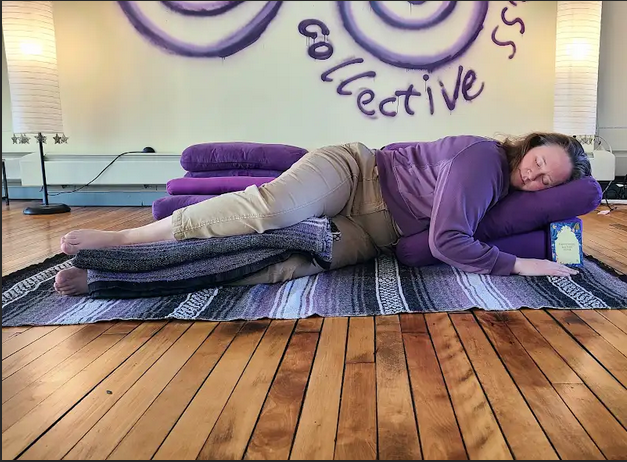
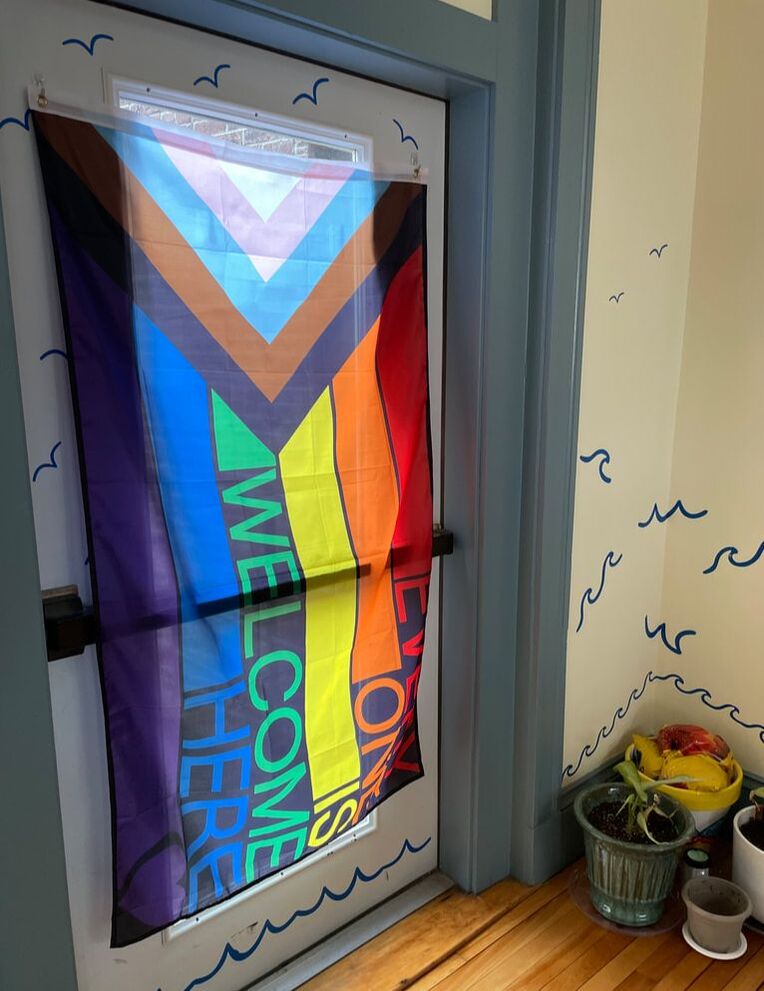
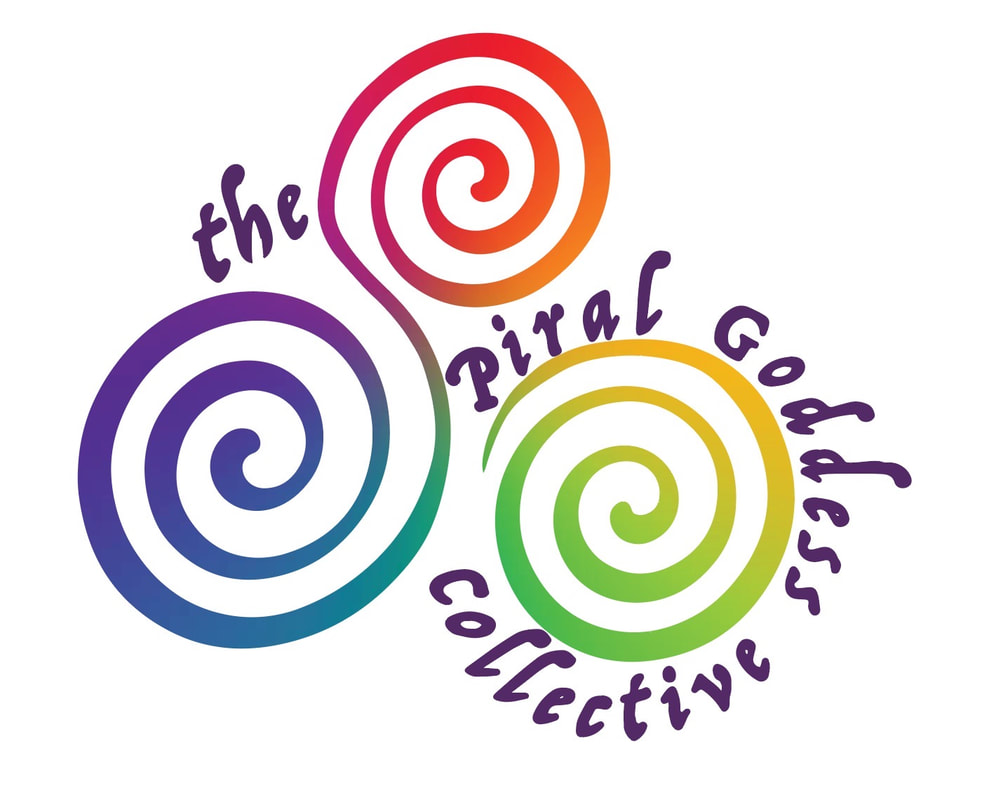
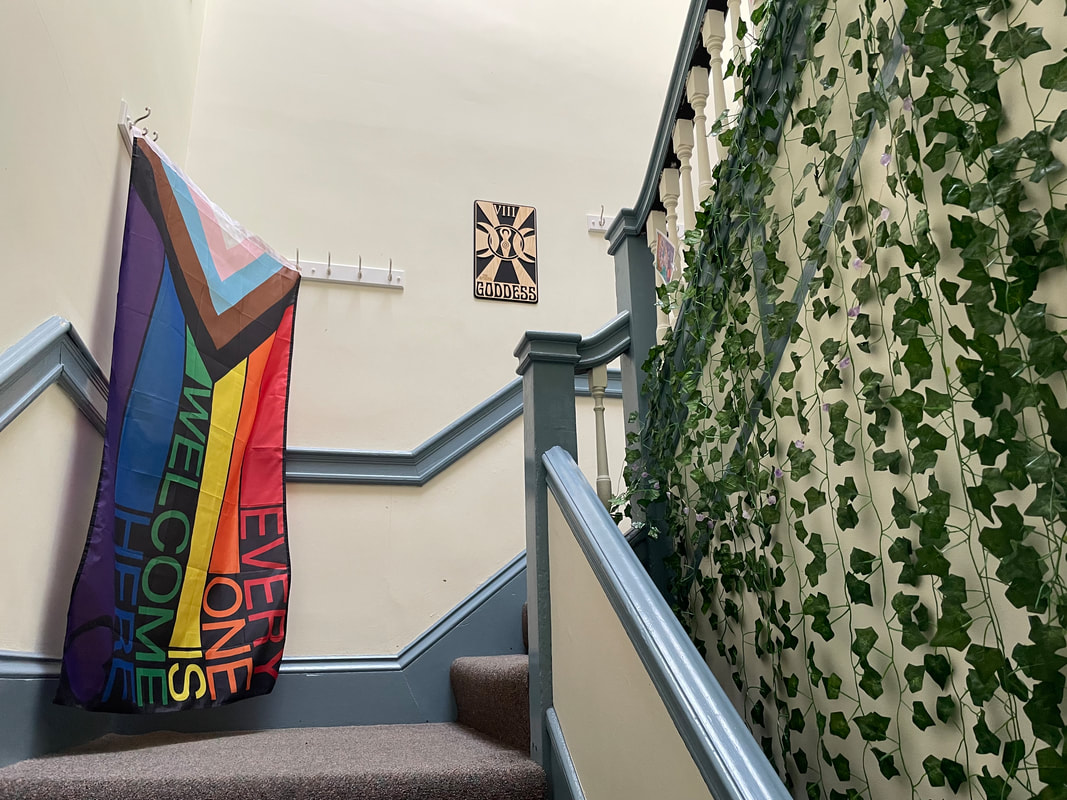
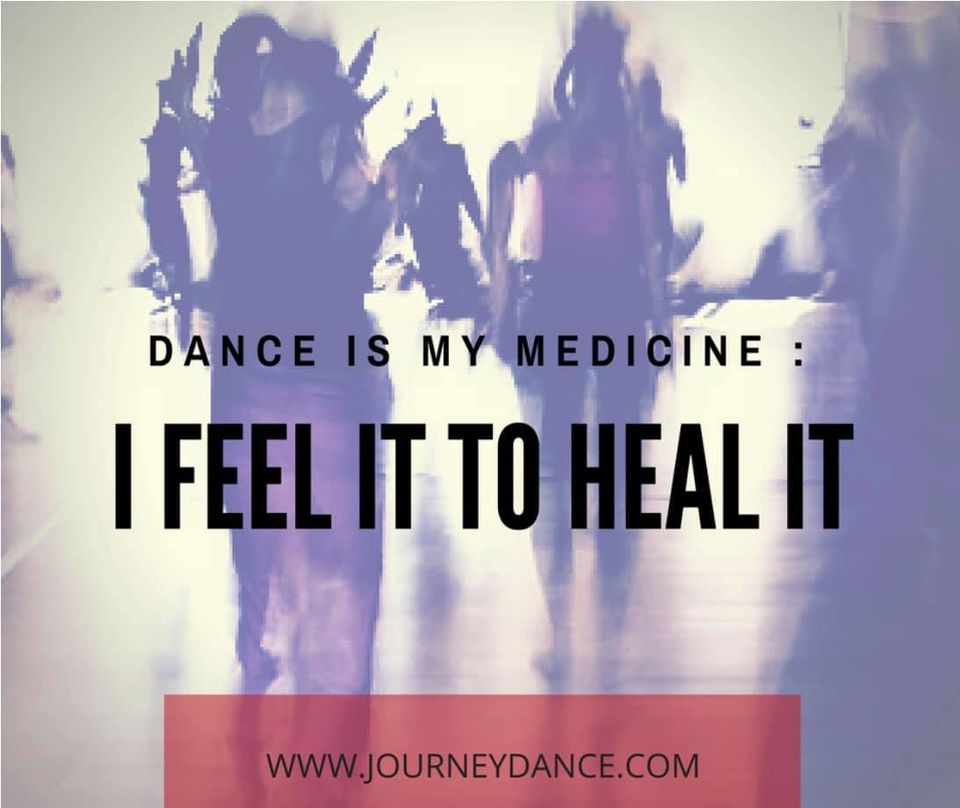
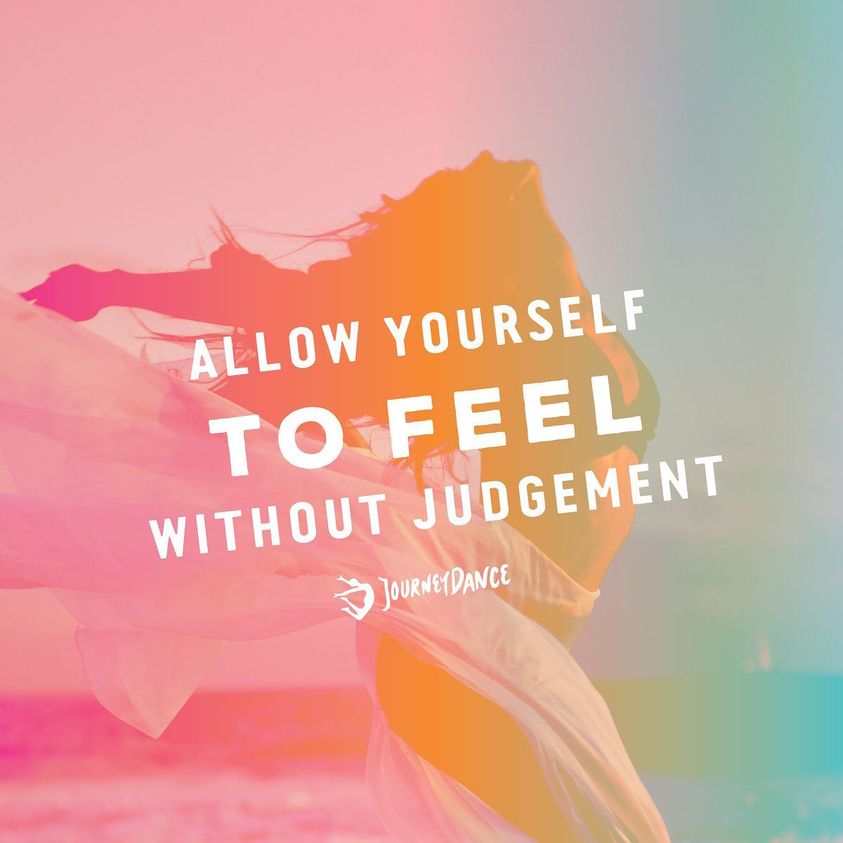
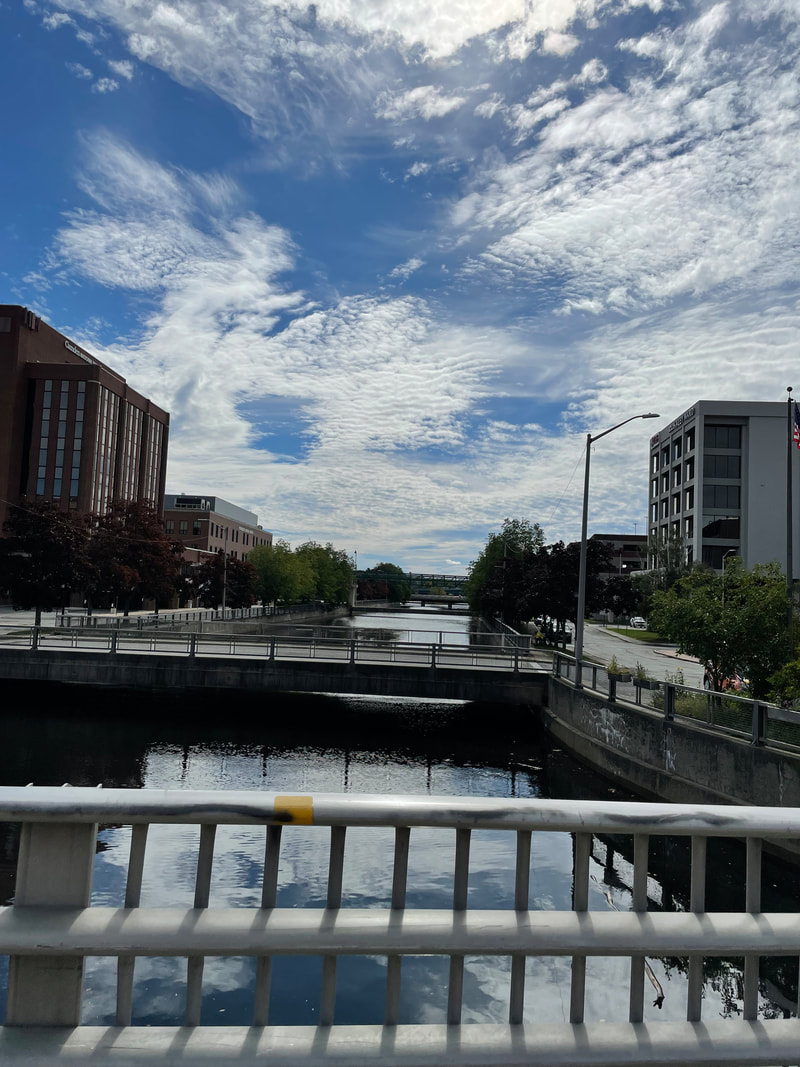


 RSS Feed
RSS Feed